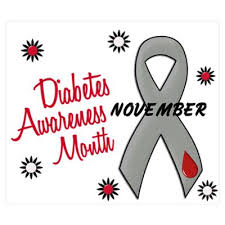With nearly 30 million people nationwide living with diabetes nationwide, it’s no wonder that the disease is a national issue. But diabetes hits racial and ethnic minority populations especially hard, so it’s helpful to take the time to help your patients who might be more vulnerable to diabetes.
November is designated as National Diabetes Month – a great opportunity to remind patients with diabetes of the importance of self-care and consistent medical care. But it’s also an opportunity to speak with patients who don’t have the disease but are at a higher risk for it about prevention and being alert to any trouble.
Because it’s silent, many people don’t take the potential complications from diabetes seriously enough until it’s too late. Urging all patients to keep their blood sugar in check is essential, but according to the FDA, minority populations also need to know that their heritage can put them at an even greater risk of not only having diabetes, but also experiencing more severe complications and having worse outcomes.
According to CDC survey results, Hispanic or Latino adults and non-Hispanic or Latino black adults have a 13.9 and 13.8 percent of the population with diabetes compared to 6.6 percent for non-Hispanic or Latino white populations. With such a disparity, it’s clear that education and care are crucial to keeping diabetes symptoms in control.
As usual, discussions about healthy habits like eating well, exercising, getting enough sleep, stress management, and being monitored for any problems or complications can’t be neglected.
Easy enough, but every nurse knows that patients often hear what they want to hear. Or maybe they hear it, but their cultural expectations or beliefs, living situations, or other barriers interfere with what they need to do.
This month, take the extra time to dig deeper and find out what your patients might have getting in the way of good diabetes management or self care in general. Do they have access to fresh foods? Transportation to doctor’s appointments? A comfortable, quiet place to sleep? Are they experiencing any pain that’s keeping them from exercising?
By asking a few more questions, you might be able to uncover important information that can give you insight into your patients’ lives and can help you find solutions for them. You might not be able to fix everything, but if you can fix something, it can be an enormous help. And when a patient feels listened to, the trust you build is especially valuable.
- WOC Nurses Week Highlights Specialty - April 16, 2024
- Honoring Radiology Nurses Day on April 12 - April 12, 2024
- Travel Offers New Career Possibilities - April 8, 2024




Good opportunity. In July of 2016. it was discovered that I got type 2 diabetes, By the end of the July month. I was given a prescription for the Metformin, I stated with the ADA diet and followed it completely for several weeks but was unable to get my blood sugar below 140, Without results to how for my hard work. I really panicked and called my doctor. His response?? Deal with it yourself, I started to feel that something wasn’t right and do my own research, Then I found Lisa’s great blog (google ” HOW NOW I FREED MYSELF FROM THE DIABETES ” ) .. I read it from cover to cover and I started with the diet and by the next morning. my blood sugar was 100, Since then. I get a fasting reading between the mid 70s and 80s, My doctor was very surprised at the results that. the next week. he took me off the Metformin drug, I lost 30 pounds in my first month and lost more than 6 inches off my waist and I’m able to work out twice a day while still having lots of energy. The truth is that we can get off the drugs and help myself by trying natural methods..